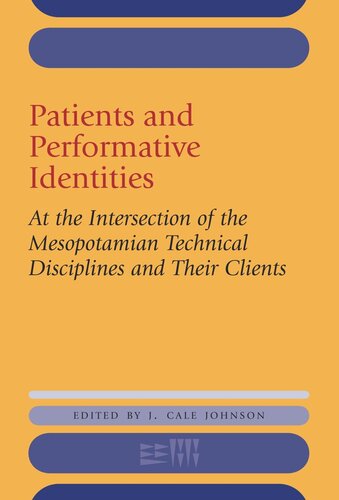

Most ebook files are in PDF format, so you can easily read them using various software such as Foxit Reader or directly on the Google Chrome browser.
Some ebook files are released by publishers in other formats such as .awz, .mobi, .epub, .fb2, etc. You may need to install specific software to read these formats on mobile/PC, such as Calibre.
Please read the tutorial at this link: https://ebookbell.com/faq
We offer FREE conversion to the popular formats you request; however, this may take some time. Therefore, right after payment, please email us, and we will try to provide the service as quickly as possible.
For some exceptional file formats or broken links (if any), please refrain from opening any disputes. Instead, email us first, and we will try to assist within a maximum of 6 hours.
EbookBell Team

5.0
100 reviewsThe missing piece in so many histories of Mesopotamian technical disciplines is the client, who often goes unnoticed by present-day scholars seeking to reconstruct ancient disciplines in the Near East over millennia. The contributions to this volume investigate how Mesopotamian medical specialists interacted with their patients and, in doing so, forged their social and professional identities.
The chapters in this book explore rituals for success at court, the social classes who made use of such rituals, and depictions of technical specialists on seal impressions and in later Greco-Roman iconography. Several essays focus on Egalkura: rituals of entering the court, meant to invoke a favorable impression from the sovereign. These include detailed surveys and comparative studies of the genre and its roots in the emergent astrological paradigm of the late first millennium BC. The different media and modalities of interaction between technical specialists and their clients are also a central theme explored in detailed studies of the sickbed scene in the iconography of Mesopotamian cylinder seals and the transmission of specialized pharmaceutical knowledge from the Mesopotamian to the Greco-Roman world. Offering an encyclopedic survey of ritual clients attested in the cuneiform textual record, this volume outlines both the Mesopotamian and the Greco-Roman social contexts in which these rituals were used. It will be of interest to students of the history of medicine, as well as to students and scholars of ancient Mesopotamia.
In addition to the editor, the contributors include Netanel Anor, Siam Bhayro, Strahil V. Panayotov, Maddalena Rumor, Marvin Schreiber, JoAnn Scurlock, and Ulrike Steinert.